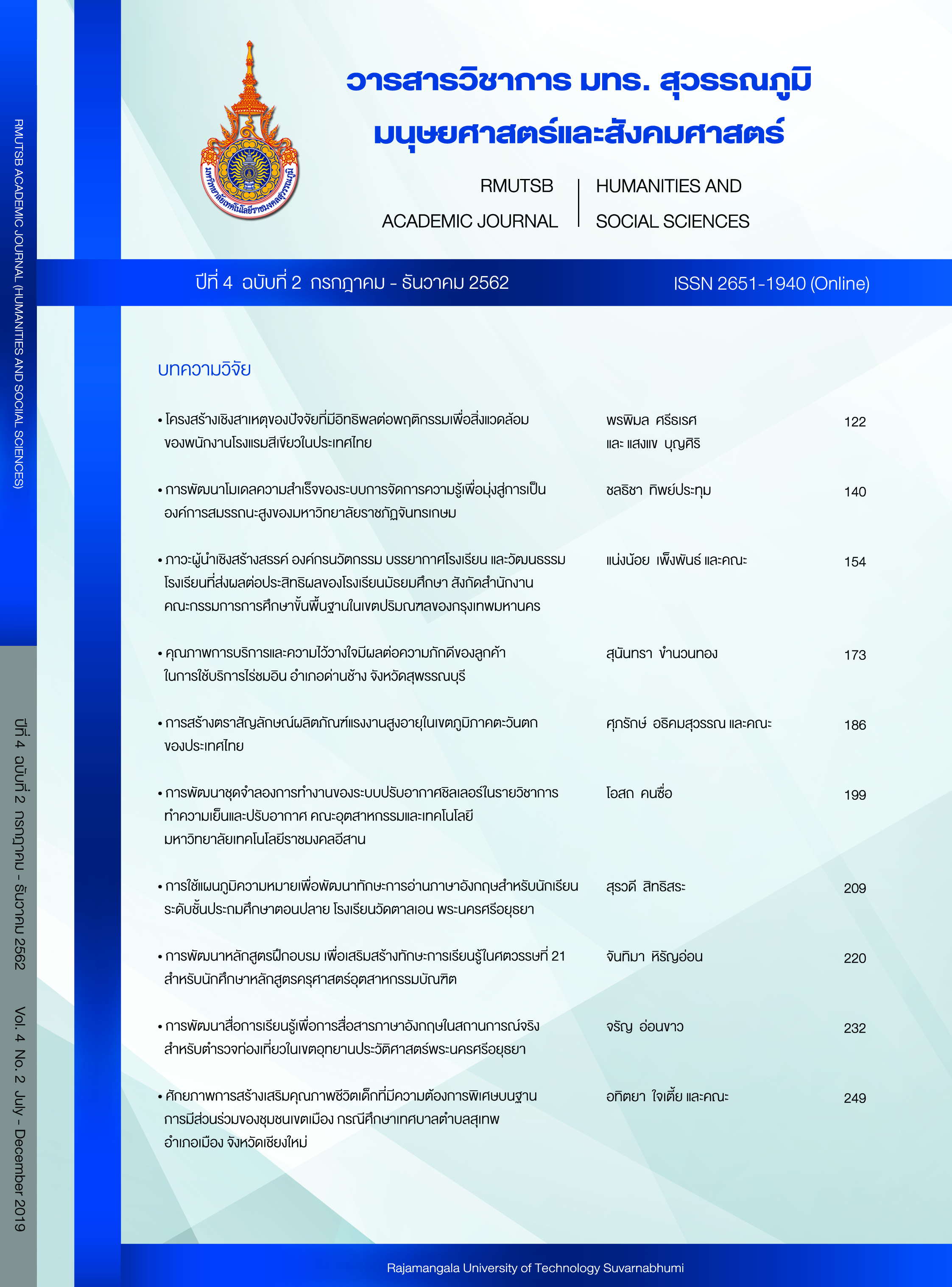Creating logos for elderly workers products in the western region of Thailand
Main Article Content
Abstract
The purpose of this research were to (1) study the perspectives of elderly workers, community representatives, and brand design experts toward logos of elderly workers products; (2) create the logos for elderly workers and (3) rank the logos and survey the elderly workers satisfaction to the logos. Data were collected from interviews with 12 participants, these included: elderly workers aged 50 and over and still working, community representatives who were community development officer and village headman, and design experts. Data analyses used were coding and content analysis then synthesize the conceptual logos design to create three different logos Rank the logos and survey the elderly workers satisfaction to the logos from 500 elderly workers aged 50 and over. Data were analyzed by frequency, percentage, mean and standard deviation.
The results showed that there were 4 perspectives on the logos of elderly workers products: the significance of the logos, the benefits of the logos, the characteristics of the logos, and the supporting organizations that drive the logos. The conceptual design of the logos was to create the logo that reflects the image of a bright, energetic elderly worker who can work for self-reliance. The logo design used the universal icon of elderly lady, with a hair bun, and holding a stick. Selected the colors that represent strength or brightness, and used both Thai and English characters. After ranking the designed logos and surveying of the elderly workers 'satisfaction to the logos, it was found that the logo No.2 has the highest score and elderly workers were satisfied with the logo overall at the highest level. The top average scores was from the logo that was easy to remember.
Article Details
References
Nakhon Pathom: Institute for Population and Social Research, Mahidol University. (in Thai)
Caro, F. G., Bass, S. A., & Chen, Y. P. (1993). Achieving a productive aging society. Westport, Connecticut: Auburn House.
Chuenta, S. (2012). The success logo analysis in the Thai logo competition (Master’s Thesis). Silpakorn University. (in Thai)
Department of Older Person, Ministry of Social Development and Human Security. (2015). Symbol. Retrieved 20 August 2018, from https://www.dop.go.th/th/aboutus/7 (in Thai)
Kiadthong, T. (2005). Symbol design (4th ed.). Bangkok: Sipprapa Publisher. (in Thai)
Kongkanant. M. (2016). Art of designing (3rd ed.). Bangkok: Faculty of Decorative Arts, Silpakorn University. (in Thai)
Ministry of Labour. (2010). Career education programs and opportunities to receive appropriate compensation in accordance with the elderly. Retrieved 20 October 2017, from https://www.mol.go.th (in Thai)
National Statistical Office. (2011). Summary of important results of the work of the elderly in Thailand 2011. Retrieved 20 October 2017, from https://www.service.nso.go.th (in Thai)
Sangpolsit, P. (1997). Visual communication design I. Bangkok: Faculty of Fine and Applied Arts, Suan Sunandha Rajabhat University. (in Thai)
Silpmathakul, A. (2000). Graphic design. Pattani: Prince of Songkla University. (in Thai)
Srikanlayanabuth, A. (1998). Logo design. Bangkok: Chulalongkorn University Press. (in Thai)
Tangcharoen, W. (1996). Design. Bangkok: Odeon Store. (in Thai)
Tangchonlatip, K., Vapattanawong, P., Chamchan, C., Kanungsukkasem, U., Vong – Ek, P., & Punpuing, S. (2010). Value of Thai elderly: Perspectives from two generations. In S. Thaweesit, & S. Boonyamanont (Eds.), Population and Social 2010: Value of the elderly from the eyes of Thai society (pp. 29-56). Nakhon Pathom: Institute for Population and Social Research, Mahidol University. (in Thai)
Thaweesit, S. (2010). Editorial note: A paradigm shift for researching the elderly. In S. Thaweesit, & S. Boonyamanont (Eds.), Population and Social 2010: Value of the elderly from the eyes of Thai society (pp. 1-11). Nakhon Pathom: Institute for Population and Social Research, Mahidol University. (in Thai)

